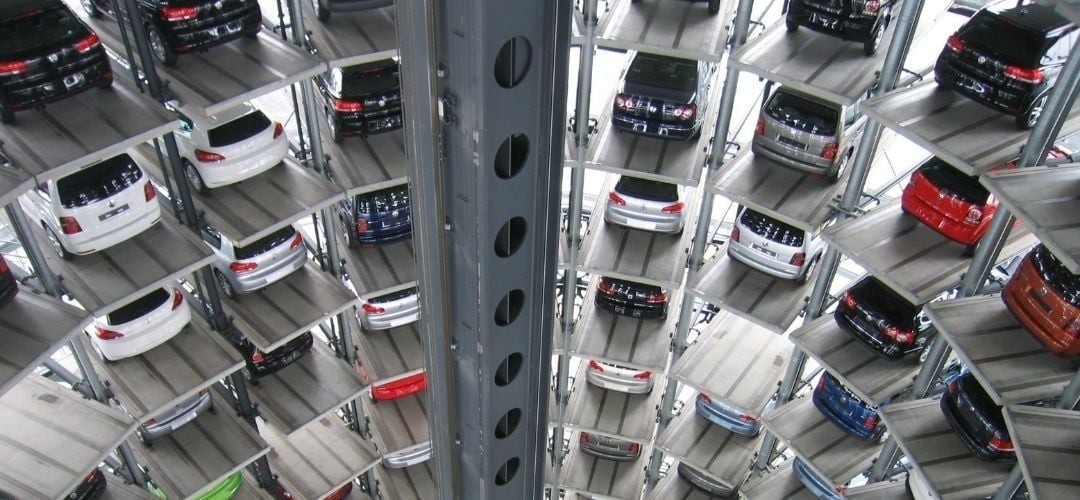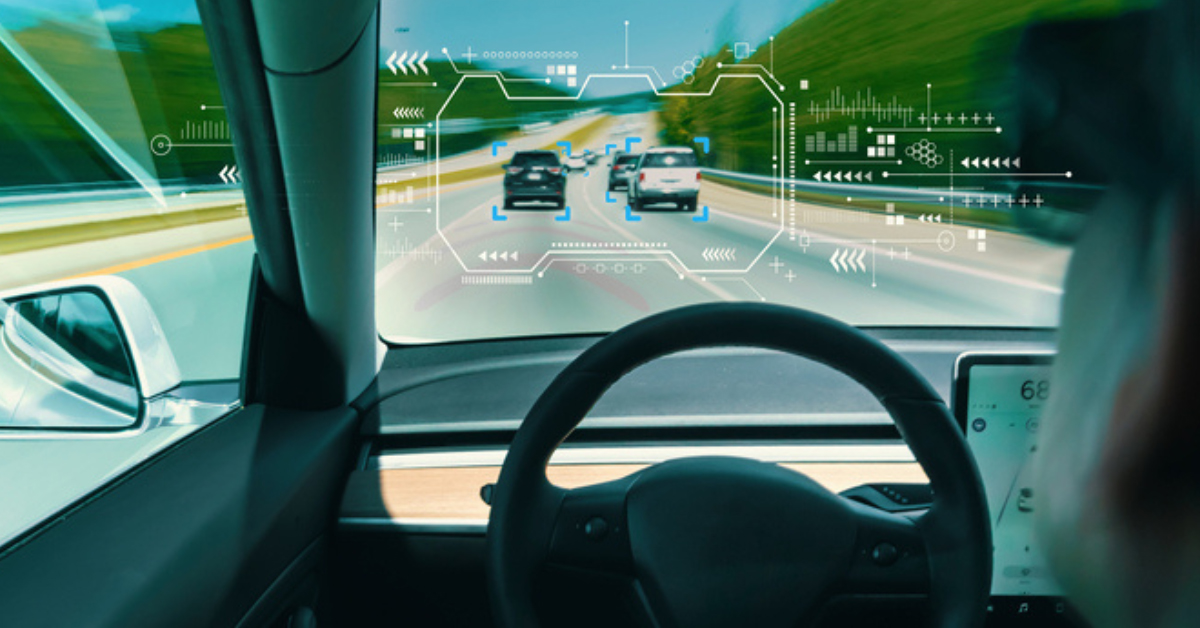IoT within mobility and parking - Application and future focus
Can you imagine... that you drive to a parking location and do not have to take a ticket? You easily pay online, drive up to the parking and the gate opens when you arrive? A seamless experience where your online data triggers real-life events, such as opening a gate? Where then lights glow up to show you the way to the last available parking spot.
No more touching of buttons when entering a parking structure or queuing at payment machines as it is inconvenient for customers. It sounds futuristic, but this technology already exists and it has been made possible due to the amazing development of IoT, the Internet of things. Incorporating IoT is a growing phenomenon. According to Statista, it is estimated that the total installed IoT connected devices will amount to 25.44 billion units worldwide by 2030.
But how does IoT work and how can you apply it to mobility or a parking facility? What can IoT assist in concerning parking further down the line? And first and foremost... What exactly is IoT?
IoT explained
The Internet of Things (IoT) is a term for the growing number of electronics that aren't traditional computing devices but are connected to the internet to send data, receive instructions or both. This means that with an IoT device certain triggers will be executed at the moment when certain data presents itself. An example of an IoT device is a smart alarm that can reset itself based on the forecast of the weather, as it knows via data on internet that people tend to travel longer with rain.
Another example is a traffic light that stays red longer when it receives information about an accident on a nearby road to prevent traffic jams down the road.

As long as there is a connection to the internet and to a device that can execute a practical trigger, there are endless possibilities for IoT, to enhance the flow of life and of traffic or mobility. It contributes to the possibility to connect and adapt: a tool to help smarten up mobility and thus smarten up cities.
How can IoT devices be used within mobility to create smarter cities?
A smart city is a city that uses real-time data to reach certain goals, such as lessening time spent on the road to have a more positive city experience while simultaneously contributing to the environment by reducing emissions.
Getting from A to B can come with a lot of obstacles that increases the time spent on the road: from traffic lights, roadworks, accidents, choosing the longer route, searching for parking, to waiting to enter garages etc. You can implement IoT in any of these crucial points to increase the flow of traffic for different types of mobility. Such as walking, biking, driving a personal vehicle, taxi, fixed-route transits (subways or buses), ridesharing and car sharing.
An IoT solution in combination with a measuring device, such as a camera, can count the number of vehicles passing, measure direction and speed of travel, and also determine whether an object is a car, bike or pedestrian. Therefore it can, for example, help ensure that traffic lights stay green at general times of the day, based on data such as the number of counted cars or low traffic coming from the intersecting road.
The IoT data is forwarded to traffic engineers at a central traffic management centre (TMC) and it can immediately modify signal timing, including how long a particular approach gets red or green, and then optimize timing throughout the day as traffic volume fluctuates.
Besides improving the flow in the city, it can also give or deny access to certain areas or garages. It can only indicate to open up these areas based on a trigger, so for example, when a car, has the correct licensing based on information coming from an online database.

The role of IoT within parking facilities
As you might imagine, IoT can provide many benefits to parking as well, such as real-time access systems, monitoring of parking space, providing better control and optimizing space and time. Implementation of IoT solutions is highly dependent on the type of parking. On-street parking could need more attention as it is more difficult to monitor free spaces or to collect revenue. Whereas off-street parking has a designated area with entry and exit points.
An IoT solution can count cars by detecting when a vehicle enters or leaves a parking garage, which helps with the predictions of patterns regarding parking occupancy and behaviour. Alternatively, IoT can be used to monitor the occupancy of parking spaces by tracking cars based on GPS. The collected data can then be shown comprehensively to owners and users of the parking.
With this data, it is possible to successfully indicate which parking spots are available and lead users to these spots or even make it possible for users to reserve empty spots. Reserving or paying online, is one key alternative to avoid touchpoints such as ticket machines, which is a huge trend within parking since the start of Covid-19.
Dynamic prices can also be applied to specific parking facilities based on the availability of the parking or increased to discourage usage of the parking facility when it becomes too busy at certain moments.
Access to parking facilities is quicker with an IoT solution as it can give access to users who are in the data system, such as regular tenants, or manage whether spots are still available for short term users. In combination with, for example, LPR (license plate recognition), the IoT device can connect the licence plate of the car to the license plate provided in the data and open a gate smoothly within a matter of seconds.
Some smart parking platforms already make it possible for short term users to reserve empty spots and temporarily give automated access via a connected database and IoT setup. This is in addition to de long-term users who are in the database.
In combination with display signage or apps, drivers can find an available parking space, how much it costs and how long the spot is available.

Future focus for IoT within the parking industry
As IoT can register and control data based on input from camera’s and sensors, and fire triggers, it can be applied to many more parking issues in the near future:
- As the data becomes clearer, soon data about parking availability will be able to be transmitted directly to a driver’s dashboard or GPS.
- Accessibility for everyone with disabilities - . Research shows that by 2050, 68% of the world’s population will likely live in urban areas, and of those people, roughly 15% will be those with disabilities: around 937.5 million people. IoT can possibly improve the ‘customer parking journey’ for drivers with disabilities. For example, by keeping track of the occupation of parking spots for disabled drivers or by offering the spots nearest to elevators to create more accessible parking for these type of drivers.
- IoT can give more insight into EV charging, or even make it possible to connect reservations to charging stations. Curious to read more about EV charging? Read this article on the future of EV and parking.
- 5G can increase the speed of IoT, as the IoT device relies on the internet. The new network will heavily increase the speed at which the new devices work to deliver the data and triggers.
- IoT can be an even greater asset within parking automation, where the parking garage can automatically park the car, maybe an autonomous vehicle.
IoT connects cities. It is the tool of the future to simplify life, whether that is within one’s own daily life or in a parking garage. Can you imagine even more possibilities?
Share your story
Do you have an innovation, research results or an other interesting topic you would like to share with the professionals in the infrastructure, traffic management, safety, smart mobility and parking industry? The Intertraffic website and social media channels are a great platform to showcase your stories!
Please contact our Sr Brand Marketing Manager Carola Jansen-Young.
Are you an Intertraffic exhibitor?
Make sure you add your latest press releases to your Company Profile in the Exhibitor Portal for free exposure.
Get up to speed on the mobility industry - our newsletter straight to your inbox!







